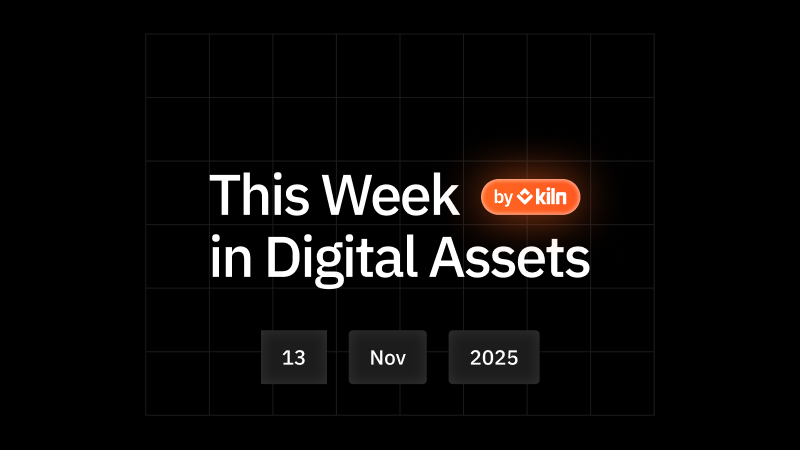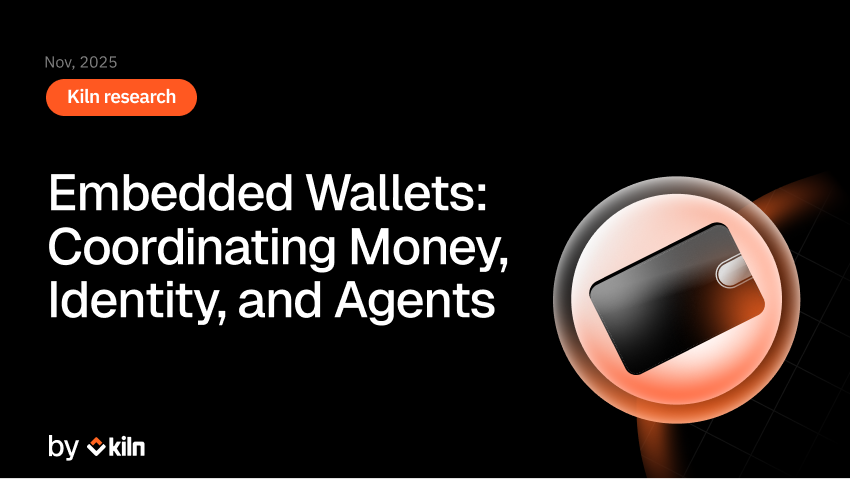This Week in Digital Assets: JPMorgan Launches Tokenized Deposits on a Public Blockchain
 < Blog
< BlogThis week, commercial banking finally came onto a public blockchain in a way that matters for institutional finance. JPMorgan launched JPMD, a tokenized deposit branded as JPM Coin, on Coinbase’s Base network for institutional clients, after several months of piloting the product with Mastercard, B2C2, Coinbase, and others. The token represents a direct claim on deposits at the largest US bank. It is issued on an Ethereum Layer 2 that already ranks among the leading L2s by total asset value bridged to and issued onchain, at over $14 billion. We view this as a structural break from the last decade of permissioned DLT experiments. A global systemically important bank is now issuing tokenized deposit claims on a public blockchain, with those tokens held and transacted through Coinbase’s institutional wallets, linking JPMorgan’s balance sheet to the broader onchain liquidity environment. This shifts the discussion from whether banks will come onchain to how bank deposits, stablecoins, and tokenized funds will coexist and compete as the three core dollar assets in digital assets.
JPMorgan’s move builds on a foundation that is already meaningful in absolute terms, even if still small relative to traditional flows. The bank’s internal Kinexys Digital Payments network processes more than $3 billion a day in tokenized payments across dollars, euros, and pounds for corporate clients, compared with roughly $10 trillion a day flowing through the broader payments division. Until now, those transactions lived in a largely closed environment, with tokenization improving speed and cut-off times but not fundamentally changing where the money sat. By issuing JPMD on Base, JPMorgan is effectively opening a bridge from its balance sheet into the broader onchain economy while keeping tight control over who can hold and move the token. From our perspective, that is the first practical example of a tier one bank treating a public blockchain as an extension of its core transaction banking franchise beyond sandbox environments.
Conceptually, we see JPMD as crystallizing a three-pillar structure for onchain cash equivalents. Tokenized deposits like JPMD represent a direct claim on a commercial bank, live squarely inside the bank regulatory perimeter, and can, in principle, be interest-bearing and covered by deposit insurance. Stablecoins like USDC and USDT represent claims on reserve portfolios, typically heavy in short-dated Treasuries and cash, and are designed for broad composability and global retail access, but sit in a different regulatory bucket and are not deposit-insured. Tokenized money market funds, such as BlackRock’s BUIDL, represent fund shares and embed yield directly, but they are securities with their own distribution rules and operational frictions. We believe all three of these dollar proxies will matter. Tokenized deposits are likely to dominate flows that must stay inside the banking system, stablecoins will continue to serve as the default medium for open crypto and cross-border flows, and tokenized MMFs will increasingly be the instrument of choice for treasurers seeking yield on idle balances while remaining close to par.
| Feature/Aspect | Tokenized Deposits (JPMD) | Fiat-backed Stablecoins (USDC, USDT) | Tokenized MMFs (BlackRock BUIDL, Franklin Templeton’s BENJI) |
|---|---|---|---|
| Economic Nature | Tokenized bank deposit (direct claim on a commercial bank) | Tokenized claim on issuer reserves (cash, T-bills, other short-term assets) | Tokenized shares of a money-market fund or similar short-duration fund |
| Issuer Type | Regulated banks (G-SIBs, commercial banks) | Non-bank financial issuers or trust companies | Asset managers via transfer agents/tokenization partners |
| Legal Claim | Direct deposit claim to bank balance sheet | Claim on reserve assets held by issuer (segregated accounts or trusts) | Claim on fund units governed by the fund prospectus |
| Access Model | Permissioned (institutional KYC, whitelisted wallets) | Open access with almost any wallet | Permissioned (qualified investors, KYC’d wallets) |
| Chains Supported | Private bank chains and select public blockchains | Many public blockchains | Usually Ethereum or institutionally oriented chains |
| Redeemability | 1:1 at par into bank deposits | Generally redeemable 1:1 for USD or other fiat currency | Redeemable at NAV of the money-market fund |
| Holder Yield | Reflects bank deposit terms, can earn yield but not always explicit onchain | Typically no yield to holder as issuer retains reserve income, but some yield possible through issuers’ distribution partners | MMF yields accrue to token holders via NAV or daily distributions |
| Primary Use Cases | 24/7 institutional payments, treasury sweeps, collateral for trading, settlement of tokenized assets | Trading liquidity, global payments, DeFi, consumer and institutional flows | Onchain cash management, treasury allocation, secured collateral in institutional DeFi |
Our view is that deposit tokens will complement rather than replace stablecoins. A bank deposit token is structurally better positioned for use cases where the legal and operational requirement is “funds must sit at a bank,” such as corporate cash management, cash leg settlement with traditional counterparties, or flows that must pass regulatory scrutiny under bank supervision. Stablecoins remain better suited for wallet-to-wallet transfers across jurisdictions, for DeFi protocols that cannot realistically onboard as bank customers, and for markets where non-bank issuers can move faster in product design. As more of both instruments come onchain, the total stock of tokenized dollars will expand, and the velocity of capital between them will likely increase. We expect deepening liquidity between tokenized deposits, stablecoins, and tokenized MMFs on centralized and decentralized venues to improve price stability around the one-dollar peg and to create more robust collateral markets for lending, derivatives, and structured products.
Today, typical institutional DeFi yield strategies rely heavily on stablecoins and, increasingly, tokenized MMFs for their cash leg. With JPMD, an onchain asset manager or treasury could, in principle, move funds from a traditional JPM operating account into a tokenized deposit, allocate some of that into an onchain vault strategy for yield, and hold the remainder in tokenized MMFs, all on the same L2. In the future, vault reporting could simply show a consolidated picture of deposits, stablecoins, and tokenized funds, with routing rules that optimize for yield, counterparty risk, and collateral eligibility. For DeFi lenders and structured products, a deposit token from a G-SIB changes the risk profile of collateral pools and may unlock new forms of credit intermediation where bank money, stablecoins, and tokenized funds are rehypothecated in layered ways. However, the key near-term constraint is that JPMD remains permissioned and limited to JPMorgan institutional clients, so integration with fully permissionless protocols will be tightly controlled.
We also see JPMD as part of a broader evolution in how banks think about their role in onchain settlement. Over the last few years, we have seen banks experiment with tokenized deposits and wholesale settlement coins on private chains for cross-border payments and intraday liquidity. The step onto a public chain suggests that the technical and compliance concerns are becoming more manageable and that regulatory stances are softening as stablecoin and digital asset legislation advances in the US and other major jurisdictions.
Looking ahead, we expect JPMD to mark the start of a broader wave of large bank deposit tokens on public chains. We will watch how actively these tokens are used onchain, whether other banks issue or adopt them, and how quickly onchain asset managers will be able to access and integrate them.
About Kiln
Kiln is the leading staking and digital asset rewards management platform, enabling institutional customers to earn rewards on their digital assets, or to whitelabel earning functionality into their products. Kiln runs validators on all major PoS blockchains, with over $11 billion in crypto assets being programmatically staked and running over 5% of the Ethereum network on a multi-client, multi-cloud, and multi-region infrastructure. Kiln also provides a validator-agnostic suite of products for fully automated deployment of validators and reporting and commission management, enabling custodians, wallets, and exchanges to streamline staking or DeFi operations across providers. Kiln is SOC2 Type 2 certified.


















